China’s frantic efforts to distract from the Uyghur genocide hit a new low Wednesday, as the Chinese Foreign Ministry tried claiming it is the United States, rather than China, that is the “epicenter” of forced labor in the world.
China has come under withering condemnation from civilized governments and human rights organizations for using slaves in occupied East Turkistan, home of the Uyghur Muslims. The U.S. passed a law in December 2021, the Uyghur Forced Labor Prevention Act, that requires importers to verify that products from East Turkistan, which China refers to as Xinjiang, were not made with forced labor.
A report published this week by the D.C.-based Jamestown Foundation found that the “scale and scope of coercive labor” in China is increasing despite the attention paid to the plight of the Uyghurs.
The Jamestown Foundation study noted that coercive labor practices in Xinjiang are more widespread than many observers think because even jobs that pay more reasonable salaries to the captive Uyghurs include systems of coercion and punishment that prevent the “employees” from leaving or expressing grievances.
“Despite the decrease in concrete publicly available evidence, the new developments are increasing both the scale and the scope of coercive labor, expanding it to higher-skilled sectors. This has profound implications for researchers and policymakers,” the report said.
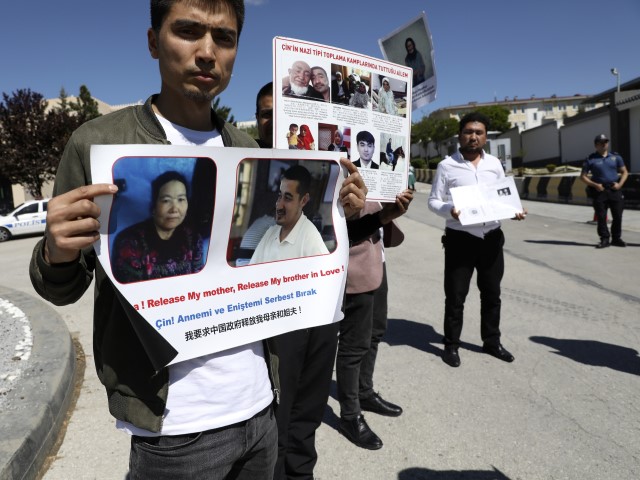
Uyghur Turks who say they haven’t heard any news our families and relatives in Eastern Turkistan attend a protest near the Chinese embassy, in Ankara, Turkey, Tuesday, May 24, 2022. (Burhan Ozbilici/AP)
The authors explained that in addition to Uyghurs who were imprisoned in concentration camps (euphemistically referred to as “vocational training centers” by the Chinese Communist Party), subjected to ideological reprogramming, and sold off as slave labor to Chinese corporations, there is a huge population of “rural surplus laborers” from Xinjiang ordered to take jobs in other provinces through “labor transfer programs” and then effectively treated like prisoners to make sure they have “continuous and stable employment.”
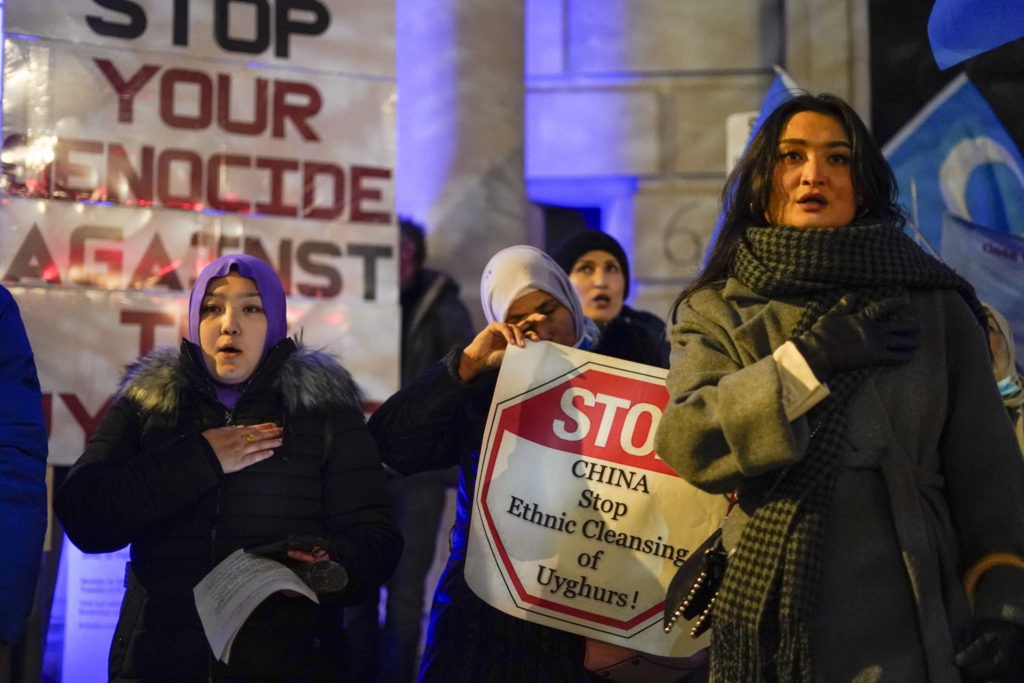
Demonstrators hold placards and flags during a demonstration outside the Chinese embassy in London, Thursday, Dec. 9, 2021. (AP Photo/Alberto Pezzali)
Uyghurs who resist these compulsory labor orders are threatened with incarceration in the brutal Xinjiang concentration camps.
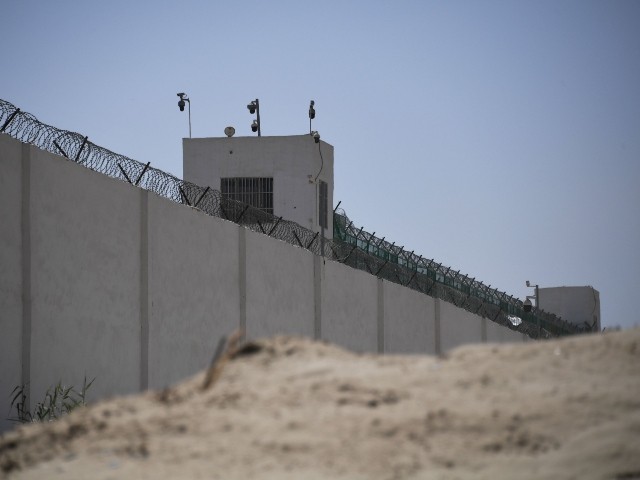
This photo taken on May 31, 2019 shows the outer wall of a complex which includes what is believed to be a re-education camp where mostly Muslim ethnic minorities are detained, on the outskirts of Hotan, in China’s northwestern Xinjiang region. (GREG BAKER/AFP via Getty Images)
These “labor transfer programs” were so profitable for China’s slave masters that the program was reportedly expanded from its original target of 2.2 million laborers annually to 3.2 million in 2021. They also serve China’s genocide agenda, as a “high-level Chinese study” uncovered by hackers in March 2021 revealed Communist officials plotting to disperse the Uyghurs across China’s huge land area to prevent them from breeding with each other. China is simultaneously flooding Xinjiang with ethnic Han Chinese settlers to dilute Uyghur culture.
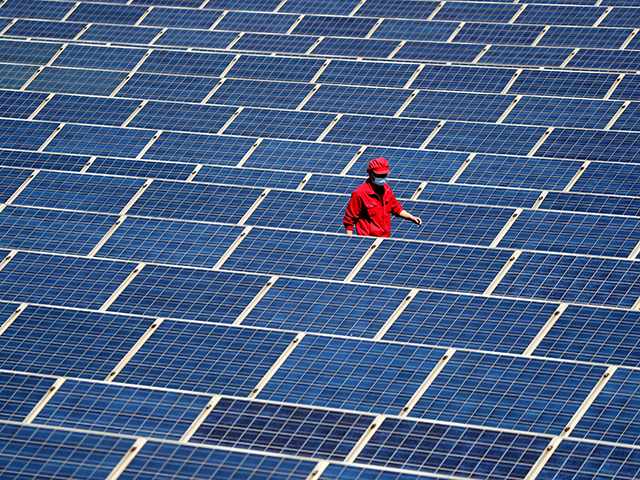
A technician inspects a photovoltaic (PV) system on the roofs of a factory on May 4, 2022 in Qingdao, Shandong Province of China. (Zhang Jingang/VCG via Getty Images)
China’s state-run Global Times on Wednesday sought to dismiss these well-documented studies as “lies about forced labor in Xinjiang,” and even more absurdly claimed the U.S. is telling these lies to “undermine global efforts to tackle climate change.” China is, by far, the worst polluter on the planet, and its emissions are getting steadily worse.
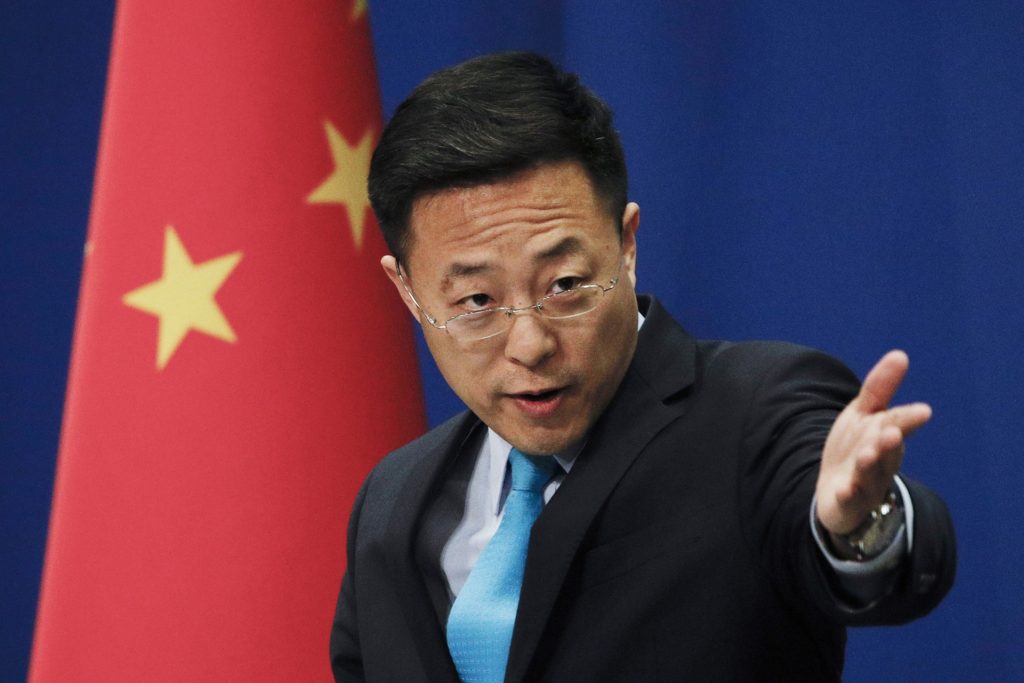
In this February 24, 2020, file photo, Chinese Foreign Ministry spokesperson Zhao Lijian gestures as he speaks during a daily briefing at the Ministry of Foreign Affairs office in Beijing. (AP Photo/Andy Wong)
The Global Times enthusiastically quoted Zhao Lijian — the Chinese Foreign Ministry spokesman infamous for spreading crackpot conspiracy theories and vicious slander — launching a deranged tirade on Wednesday after U.S. Trade Representative Katherine Tai expressed concerns about forced labor tainting the Chinese solar panel industry:
“China has repeatedly stressed that ‘forced labor’ in Xinjiang is an outright lie. The US attempts to exclude China from the global PV supply and industry chain by maliciously making up and spreading the lie through political manipulation, because China is the world’s largest country in PV manufacturing and installed applications, and Xinjiang is the most significant global polysilicon production base,” Zhao noted.
The US, however, should take a look at its own history and reality, as the epicenter of human trafficking and forced labor, said Zhao.
For instance, nearly 100,000 people are trafficked from outside the US for forced labor each year, and at least 500,000 people are currently enslaved in the country, Zhao noted. A large number of child laborers are still in the US working in agriculture, with many children working from the age of eight, according to Zhao.
One may certainly criticize the disregard for border security and the humanitarian crisis caused by mass illegal migration demonstrated by the current administration and many of its predecessors, but unlike the gigantic concentration camps of Xinjiang, illegal alien trafficking is not an official government policy.
Also, many of the people running these illegal labor operations are not American citizens. By contrast, Xinjiang’s forced labor camps are filled and staffed by the Chinese government, not by gangsters from Kazakhstan and coyotes from Kyrgyzstan.
The Chinese Communist Party has tried this wheezy propaganda line before, for example in an August 2021 Global Times editorial that attempted the same trick of comparing pre-Civil War black slavery to modern illegal alien labor rackets.
The Chinese propagandists stepped on their own toes a bit by admitting that American state and federal agencies regard cross-border human trafficking as a problem they need to stop, unlike Beijing’s genocide agenda:
In the past five years, all 50 states in the US and the District of Columbia have reported cases of forced labor and human trafficking. Up to 100,000 people are trafficked into the US for forced labor annually and half of them are sold to sweatshops or enslaved in households. In 2019 alone, the FBI reported 1,883 cases of human trafficking, over 500 more than 2018.
The Global Times ended up pathetically arguing that America has no moral standing to criticize the Uyghur genocide because it has criminals incarcerated in prison, and then collapsed into the usual Communist boilerplate about how human rights concerns are just a hypocritical racket America uses to keep the rising Chinese superpower down:
For a long time, the US claimed itself to be the defender of human rights and willfully played double standards in the human rights issue. It used human rights as a tool to maintain its hegemony and accused other countries of forced labor and human trafficking.
But no matter how much the US makes a fuss and touts itself, it cannot hide the truth of its human trafficking and forced labor record. The halo of US-style human rights is scattered.
Although human trafficking and forced labor is only the tip of iceberg regarding US human rights violations, it is enough to make the world see the superpower, which willfully accuses and sanctions other countries, be the biggest contributor to the global human rights disaster.
This Chinese tactic did not work in the summer of 2021, and it won’t work now, especially with investigators uncovering fresh mountains of evidence about the Uyghur genocide. It should, however, prompt self-described American liberals to reflect on the hideous humanitarian consequences of open borders — consequences our totalitarian adversaries are happy to exploit for propaganda purposes.
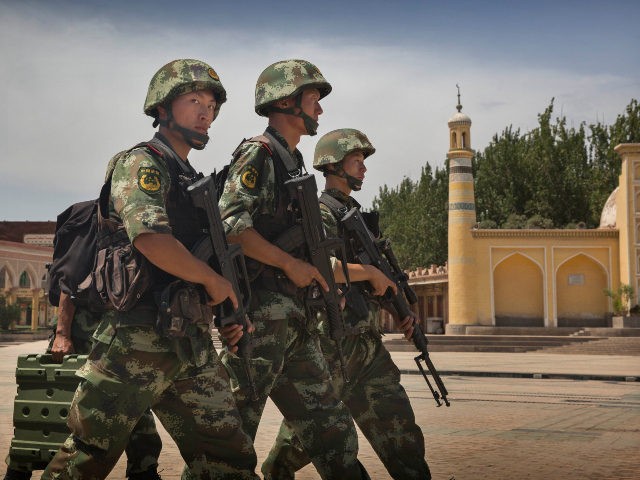
COMMENTS
Please let us know if you're having issues with commenting.